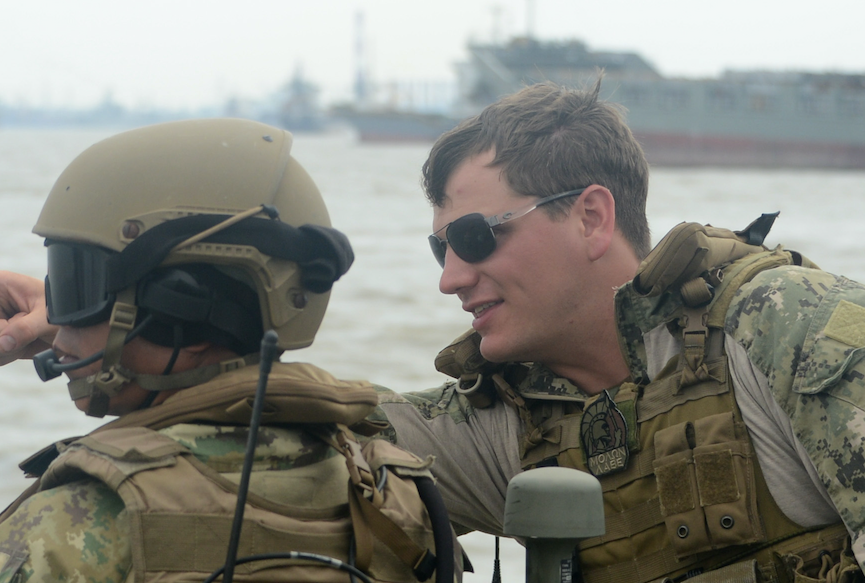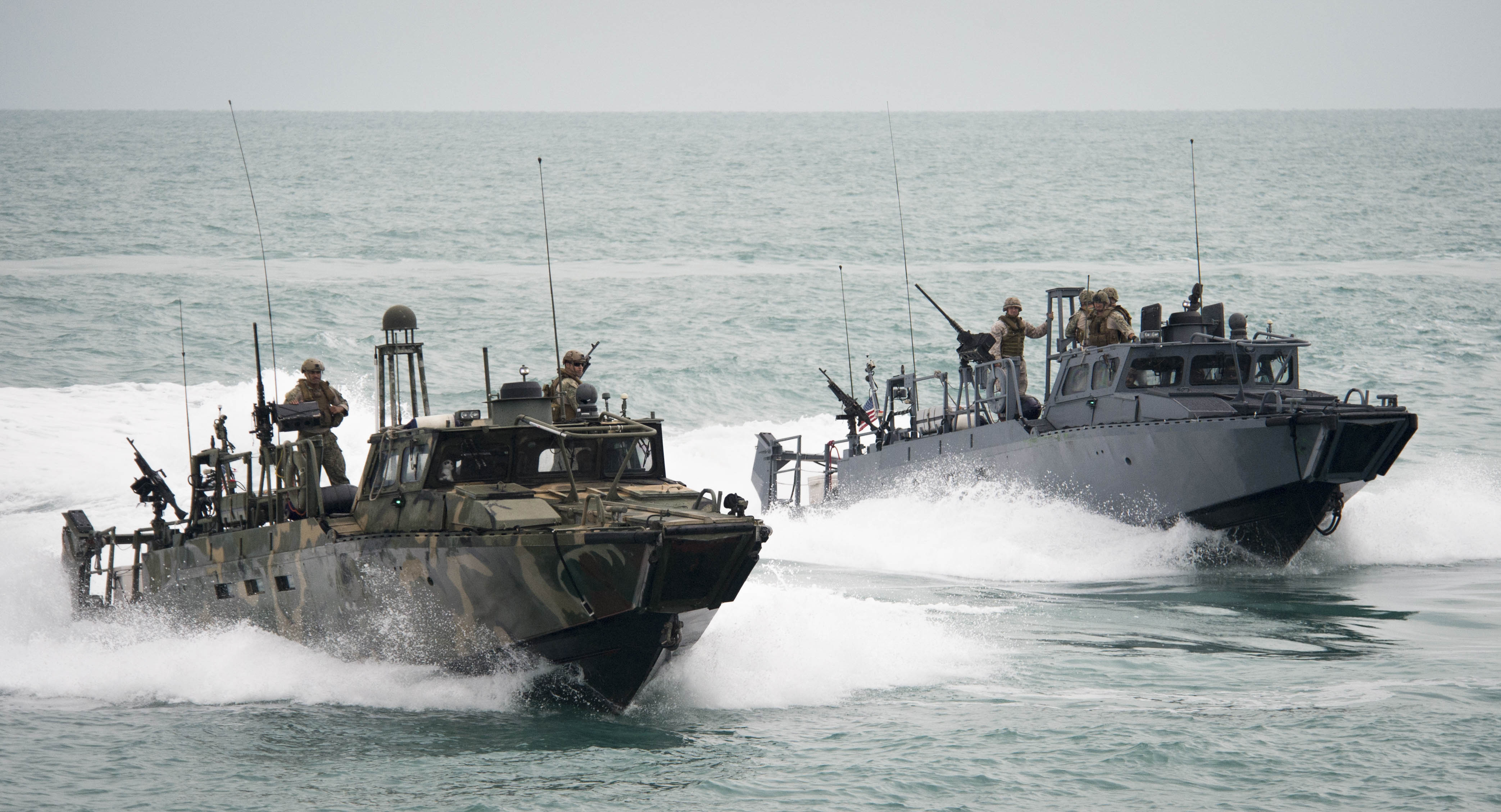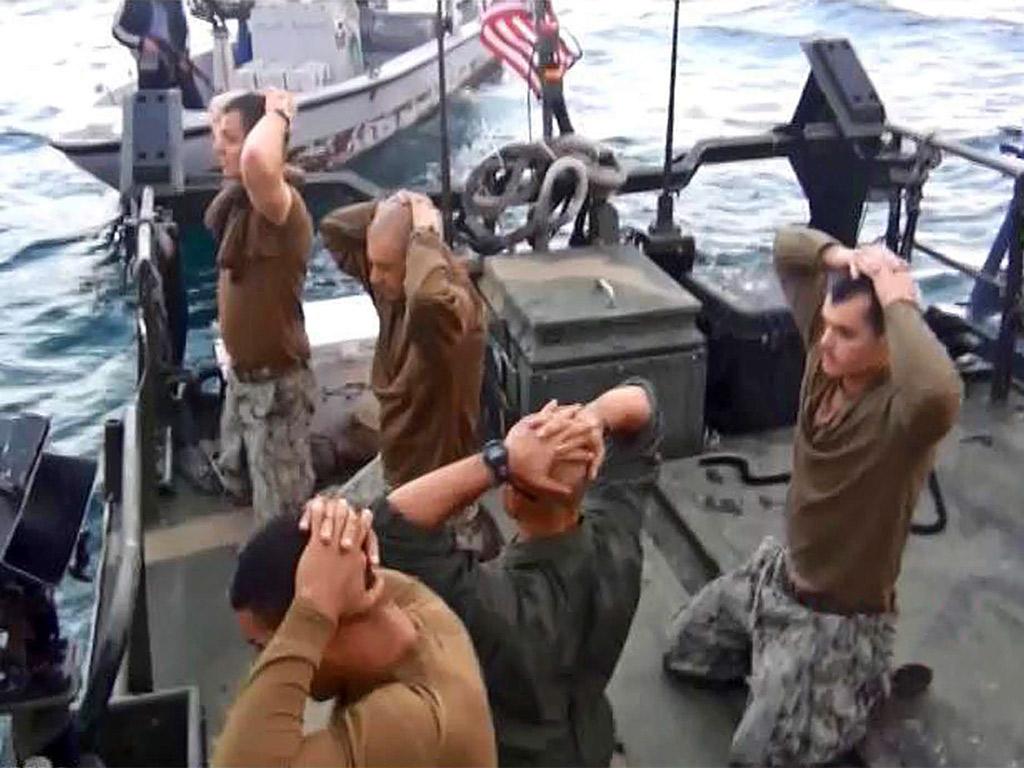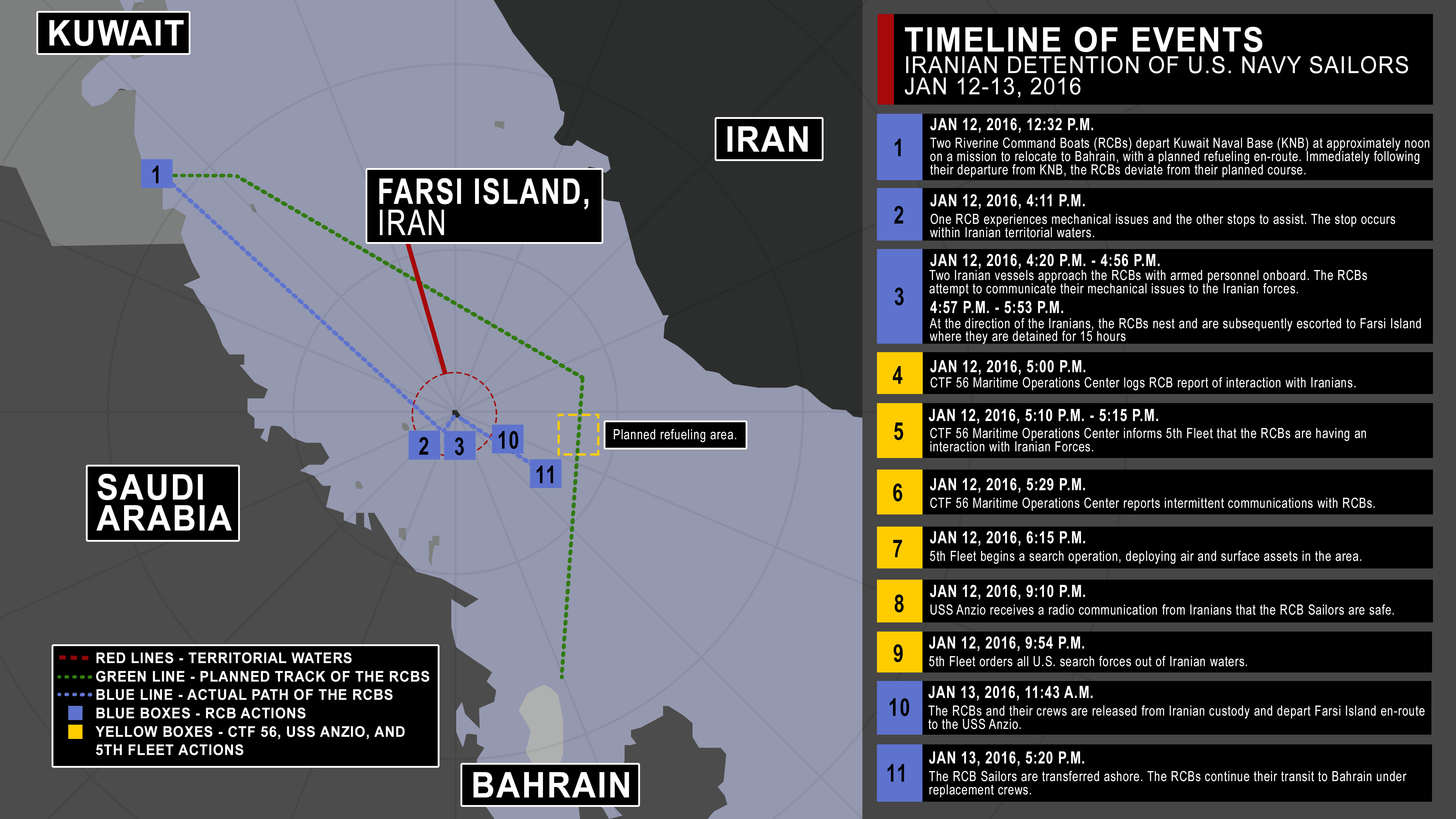
CORRECTION: The date on a photo of Lt. David Nartker in a caption in a previous version of this post was incorrect. It was taken on Aug. 6, 2015, not 2016.
This post was updated with additional information on the sailors who faced administrative punishment. A graphic of the U.S. Navy’s timeline of events was also added.
The officer in charge of the U.S. sailors who were captured and held by Iranian forces in January faces administrative punishment for his role in the incident, several defense officials have confirmed to USNI News.
Lt. David Nartker – previously assigned to Costal Riverine Squadron 3 — faces an unspecified punishment recommended by the commander of Naval Expeditionary Combat Command (NECC) Rear Adm. Frank Morneau at admiral’s mast last week, USNI News has learned.
USNI News understands he faced multiple specifications under Article 92 – failure to obey an order or regulation — of the Uniformed Code Military Justice. A second unidentified officer — who was a staff officer with Task Force 56 — also appeared before Morneau and was not punished.
NECC would not confirm if Nartker went to mast, but issued a statement on the ongoing accountability actions following the incident.
“Four Navy officers went to admiral’s mast, two have been awarded a punitive letter of reprimand for violating Articles 90 (disobedience of a superior commissioned officer) and 92 (dereliction in the performance of duties) of the Uniformed Code of Military Justice; one Navy officer was found not guilty of violating Article 92 (dereliction in the performance of duties) of the Uniformed Code of Military Justice; and accountability actions for the fourth Navy officer have not yet been completed,” Lt. Cmdr Jennifer Cragg told USNI News.
“Two enlisted have been awarded a punitive letter of reprimand for violating Article 92 (dereliction in the performance of duties) of the Uniformed Code of Military Justice.”
Nartker’s reprimand is the last of a total of nine sailors who faced administrative punishment as a result of the January incident in which Nartker and nine other sailors on two riverine command boats were seized by Iranian Republican Guard less than two miles from the Iranian naval base on Farsi Island on the eve of the adoption of an international nuclear deal with Iran.
A subsequent investigation by the Navy found a pattern of behavior that contributed to multiple failures in adhering to standards and regulations up and down the chain of command – from the boat crews to the head of U.S. Central Command’s naval expeditionary Task Force 56.

Cmdr. Eric Rasch — the commander of the riverine squadron to which the two Riverine Command Boats belonged — was relieved in May. Capt. Kyle Moses, commander of Task Force 56, was removed from his position in June. An enlisted member of one of the two RCBs faced an administrative hearing but was not punished.
In July, four other sailors went to mast and were dealt administrative punishments. One unidentified officer was issued a punitive letter of reprimand for violating Article 90 — disobedience of a superior commissioned officer. Three enlisted sailors were issued punitive letters of reprimand for Article 92 violations — dereliction in the performance of duties, according to a statement from the service.
“In order to be a Navy that successfully maintains the trust and confidence of the American people, the chain of command and our sailors, we have an obligation to self-examine and hold ourselves accountable when necessary,” NECC commander Morneau said in a July statement.
‘I made the gamble that they were not going to kill us’
Shortly after the two RCBs departed Kuwait, the crews deviated from their planned course and were lost when one of the RCBs broke down. In the process of fixing the boat, the pair of RCBs came within sight of the Iranian Farsi Island in the middle of the Persian Gulf.

When the two RCBs were surrounded by IRGCN forces from naval base on the island, Nartker thought the then-pending nuclear agreement between Iran and the U.S. would prevent Iranian forces from treating his sailors harshly and was trying to prevent an international incident when he surrendered, according to a partial transcript of his interview with Navy investigators included in the incident report .
“We might have all been dead at that point in time. I didn’t want to start a war with Iran either. That was also on my mind. I didn’t want to start a war that would get people killed. My thought at the end of the day was that no one had to die for a misunderstanding,” Nartker told investigators
“I made the gamble that they were not going to kill us. I made the gamble that they’re not going to Tehran and parade us around like prisoners of war — because they want this nuke deal to go through.”
He went on to tell investigators, “what’s the commander’s intent here, the highest commander’s intent? The Commander-in-Chief would not want me to start a war over a mistake, over a misunderstanding.”
 The crew was taken to the naval base, held and filmed in captivity. The resulting seizure resulted in Secretary of State John Kerry directly intervening to diffuse the international incident ahead of the culmination of the international nuclear deal.
The crew was taken to the naval base, held and filmed in captivity. The resulting seizure resulted in Secretary of State John Kerry directly intervening to diffuse the international incident ahead of the culmination of the international nuclear deal.
In addition to the top-to-bottom look at the riverine units in CENTCOM, NECC is undergoing a separate review to see if the command adequately manned and equipped for the riverine mission.
“Navy Expeditionary Combat Command (NECC) is currently assessing assigned mission sets for expeditionary units, and is reviewing Coastal Riverine Force employments to determine whether the forces are effectively tasked within the capabilities and limitations of their boats as well as their training regimen,” the command said in a statement to USNI News in July.





